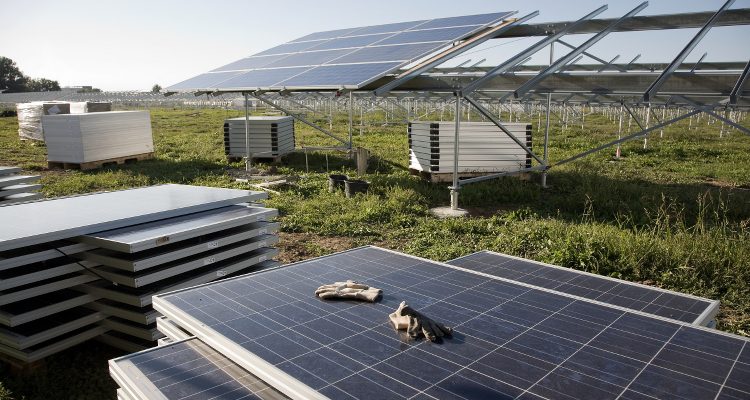Solar “cheaper than nuclear” by the time Hinkley is built
An unpublished UK government report projects the costs of large-scale solar and wind power to be cheaper than nuclear by 2025. Renewable energy will cost GBP 50-75/MWh and new nuclear GBP 85-125/MWh, the report estimates.
The British government expects solar and wind power to be considerably cheaper than nuclear power by the time Hinkley Point C is completed. Theresa May’s cabinet surprisingly delayed approval on the controversial nuclear power plant last month. The proposed 3,200 MW site with two EPR reactors in Somerset is one of eight announced by the government in 2010. May’s decision prompted a reconsideration of alternatives that could power Britain. Especially, if there is no substantial backing for the Somerset reactor. She may have bought more time this way to delay the big decisions until after the Brexit. Or maybe she became aware of the unpublished report. This estimates onshore wind power and large-scale solar to cost around £50-75/MWh generated in 2025. New nuclear is anticipated to be around £85-125/MWh. This would be in line with the guaranteed price of £92.50/MWh that the government has offered Hinkley’s developer, EDF.
First time government acknowledges renewables to be cheaper
Previous projections in 2010 and 2013 assumed the two renewable technologies would be more expensive than nuclear. Since then solar PV costs have continued to fall. And even these latest price forecasts might be conservative. It is the first time the government expects renewable prices to be cheaper than nuclear.
The figures were revealed at the National Audit Office (NAO) in July. The NAO said in its report that “the energy department’s forecasts for the levelized cost of electricity of wind and solar in 2025 have decreased since 2010. The cost forecast for gas has not changed, while for nuclear it has increased.” Niall Stuart, chief executive of the trade body Scottish Renewables, said: “These numbers speak for themselves: onshore wind and solar will be significantly better value than all other large-scale sources of power in the UK by 2025.
Many Green Party campaigners have protested against the Hinkley nuclear option. Green party MEP, Molly Scott, called Hinkley Point C “a white elephant” and said: “These latest figures confirm what many of us have been saying for years: that the Hinkley project is a dud.”
Government’s solar subsidy cuts increasingly galling
If the nuclear option is chosen, projections show that the Hinkley plant is likely to cost British taxpayers close to £30 billion in subsidies over the course of its lifetime. These figures are even more vexing for the UK’s solar sector, which has been repeatedly told by the government to “stand on its own two feet” in the face of severe cuts.
Since coming to power in May 2015, the government ended onshore wind subsidies, as well as cutting various subsidies for solar. Meanwhile, new government data showed that renewables generated 25.1% of the UK’s electricity in the first quarter of this year.
Sources:
Image:
Shutterstock





